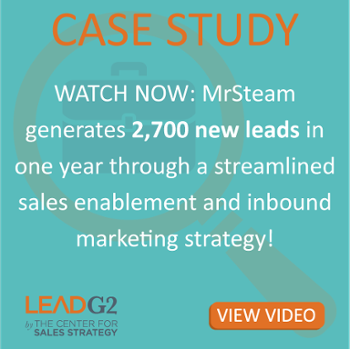How to Develop a Lead Nurturing Plan
Ask any salesperson about the challenges they face, and most will tell you that prospecting is the toughest part of the sales process. It’s hard to...

When a prospect is considered an inbound lead, there's a natural inclination to treat them differently than prospects that are identified and cultivated by individual salespeople. This is especially true for industries that still rely heavily on cold calling. While the chances are greater that an inbound lead will close faster than an outbound lead, that does not mean they're ready to purchase. Pinging them with new messages, filling their emails with offers, and bombarding them with LinkedIn notifications will only scare them away.
A rapid response is important. It's never too soon to connect with an inbound lead, but how many times should you follow up with an inbound lead before calling it quits? The short answer is: as many times as it takes. The longer answer requires an explanation.
 Thanks to advancements in technology, many sales teams can gain a better sense of prospects viewing their websites and emails. This information helps salespeople understand user behavior and assists in how to tailor their outreach.
Thanks to advancements in technology, many sales teams can gain a better sense of prospects viewing their websites and emails. This information helps salespeople understand user behavior and assists in how to tailor their outreach.
A lead is someone interested in your products or services. Classifying them as an inbound lead or outbound lead depends on how they connected with you and how much they know about your business. Salespeople approach outbound leads who are unfamiliar with your company and who have undefined needs. An inbound lead approaches you because they know the company, and they've conducted enough research to find that you offer a solution to a need they have.
Data shows us that fast follow-up can make or break a sales opportunity. But many salespeople tend to feel like if an inbound lead was handed to them, then it must be hot. The prospect must be ready to talk and ready to buy, and all the salespeople have to do is introduce themselves and keep the conversation going. This absolutely happens (and we love it when it does), but this is not the only goal or benefit of a successful inbound marketing strategy.
The goal of a truly robust and strategic lead generation plan is to identify potential prospects, at every stage of the buyer’s journey, that may not have been identified otherwise. This does not only include, but in many cases particularly focuses on, top-of-the-funnel (TOFU) leads.
At the core of inbound marketing, we want to create and publish content that's easily found online by potential buyers, as early as possible. We want them to identify themselves when they are simply becoming aware of their problems or needs, or just starting to consider their options... before they’ve ever talked to potential vendors, like you.
The marketing department's goal is to be the first to form a relationship with them by creating compelling educational content that showcases your brand’s expertise, value, and thought leadership.
The next step is that of the salesperson who continues and nurtures that relationship, as much as is needed, in order to get closer to the sale. Marketing’s job is not to get a lead ready to buy (though there are certainly ways marketing helps with this) but to introduce a lead to your organization, determine that the lead is qualified, and let you (the salesperson) do what you do best—uncover needs and sell solutions.
When given a lead generated through your inbound marketing efforts, it’s key that you first identify where the customer is at in the buyer’s journey and then continue that conversation that was started online. Here are a few general sales follow up statistics to keep in mind:
HubSpot reports 44% of salespeople give up after one follow-up. It’s vital that you're persistent, just like you would be with any other prospect you are trying to engage with or set up an appointment with. You must use content, valid business reasons, and a variety of touchpoints—again, just like you do with any other prospect—in order to move them along.
Understanding these things and acting appropriately will help ensure you close more business and that your marketing leads aren’t going to waste, because who wants that?

Ask any salesperson about the challenges they face, and most will tell you that prospecting is the toughest part of the sales process. It’s hard to...

If your sales and marketing teams are meeting on a regular basis to review the quality of leads that are coming in, there is a good chance that you...

1 min read
I spend a lot of time talking to people about their business needs, and if there’s one thing I know for sure, it’s that nobody needs inbound...